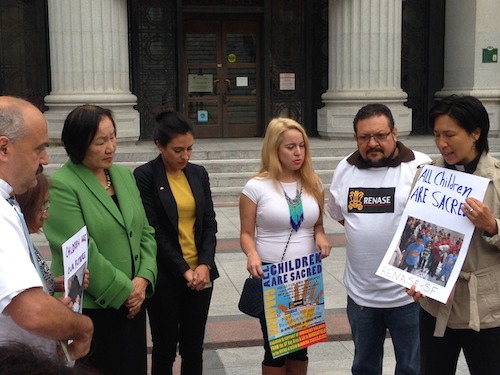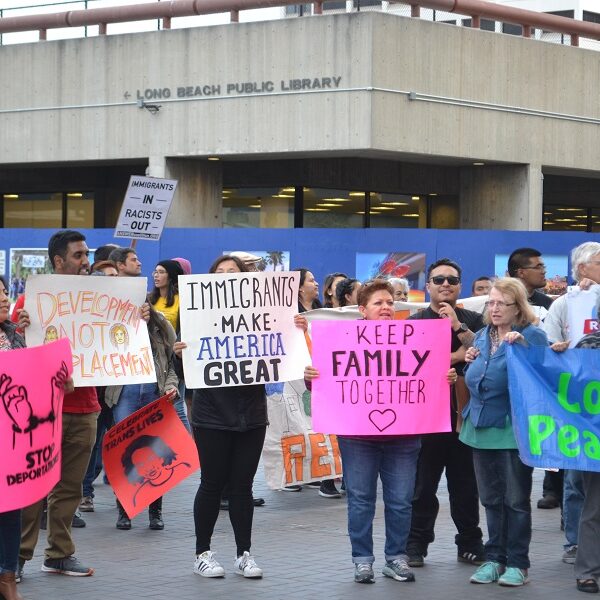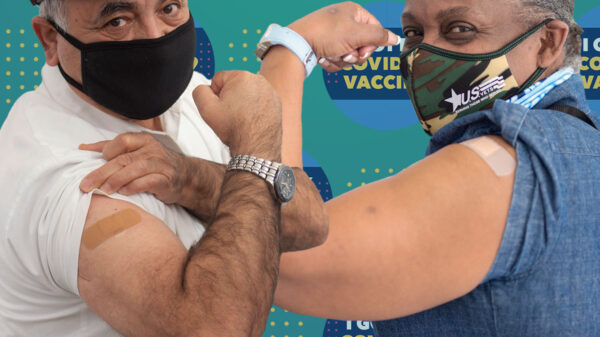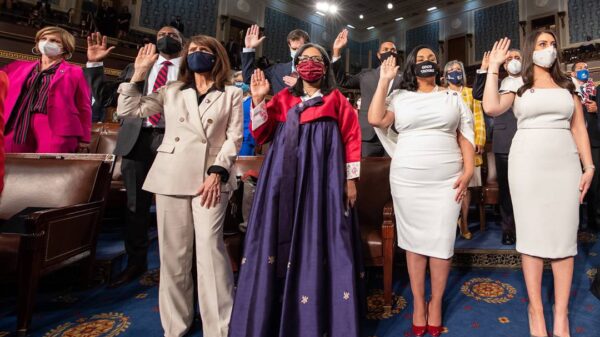Image: Sanctuary Movement Forum in Berkeley with Pastor Pablo Morataya officiating (in red scarf, center). Photo credit: Alex Madonik.
OAKLAND, Calif. — Edwin can hardly understand Spanish and is slowly learning English, but his biggest dilemma now is finding a way to save his mother from the violence in his native Guatemala, and how to pay the $7,000 he owes lawyers.
Edwin, 14, is a native Mam speaker (the Mayan language of his ethnic group). In spite of his youth, he has already made a dangerous escape from the gang violence of his homeland, crossed the U.S.-Mexico border and spent two months in the El Centro Service Processing Center, an immigrant detention facility south of Los Angeles.
Since his release from detention two months ago, Edwin has found a home at the Primera Iglesia Presbiteriana Hispana (PIPH, First Hispanic Presbyterian Church) in Oakland.
“The church wants me to go to school during the day, but how am I going to cover my expenses if I don’t work,” he asks. “How am I going to pay for rent when I find where to live, and send money back for my mother, my brother and my sister?”
PIPH is one of several religious organizations in the Bay Area that have spearheaded a burgeoning Sanctuary Movement that began last summer in Arizona. So far 24 congregations offering sanctuary in 12 cities across the country have joined.
Inspired by the Sanctuary Movement of the early 1980s, when at least 500 churches offered safe-havens for migrants escaping conflict in Central America, faith leaders today are looking to renew that commitment by providing shelter, food and even legal advice to this latest wave of child refugees.
“We are helping these kids with shelter, clothes, food, classes, vaccinations,” says PPIH Pastor Pablo Morataya, adding that many live in fear of being detained again. “That is why we need to become a sanctuary, so they can feel safe.”

Reverend Deborah Lee (at right) offers a prayer for unaccompanied minors at an Oct. 9 event organized by the Salvadoran National Network Abroad (RENASE). Oakland Mayor Jean Quan (at left) has supported measures that provide aid to the Central American youth. Credit: Courtesy, Mayor’s Office
Places of resistance
Earlier this month St. John’s Presbyterian Church in nearby Berkeley hosted a forum that drew dozens from congregations around the Bay Area to learn about the history of the Sanctuary Movement and how it is helping today’s migrant youth.
“Our idea of a sanctuary can take different forms,” explained Reverend Deborah Lee, director of the Interfaith Coalition for Immigrant Rights, at the forum. These can range from providing safe living spaces, to accompanying refugees in legal procedures and offering hospitality and other kinds of protections.
St. John’s Pastor Max Lynn reminded attendees that Berkeley declared itself a sanctuary in 1982, two years after the assassination of the Archbishop of San Salvador, Oscar Arnulfo Romero. “Changing immigration policy is a long path,” he said, “but in the meantime the least we can do is bring support to those who were brutally violated.”
Lynn’s church is currently helping to reunite several families, including the parents of one 10-year old, the youngest of three sons and the last to arrive to the United States. “We are struggling to raise money for the lawyers and the courthouse process,” he said.
Lee praised Latino congregations specifically for helping to turn church property “into a place of resistance” against deportation orders.
“Our actions since October 16th include doing weekly vigils in front of the immigration courts, constant praying for the families, and increasing the number of churches that are willing to become sanctuaries.”
Relieving the trauma
Data from U.S. Customs and Border Protection (CBP) show that between October 2013 and the end of September 2014, 68,541 unaccompanied children from El Salvador, Honduras and Guatemala were apprehended along the southwest border. They estimate that by the end of 2014, the number of children seeking protection in the United States will reach 90,000.
Almost 13,000 of them are seeking asylum through immigration courts in California, according to the Transactional Record Access Clearinghouse (TRAC) at Syracuse University.
To meet the costs, Oakland’s City Council last week voted unanimously to adopt a resolution authorizing a grant of up to $577,000 to finance legal representation, mental health services and housing for the migrant youth.
San Francisco approved a similar measure in September that provides more than $2 million in funds to pay for legal support for unaccompanied minors and families registered on the San Francisco Immigration Court’s expedited removal docket.
Oakland “has always been a refuge with no exceptions, and we are happy to help these kids, taking into account the responsibility of the United States in the drug war in Central America,” said Mayor Quan at an event organized by the Red Nacional Salvadoreña En El Exterior, or RENASE (Salvadoran National Network Abroad).
RENASE is urging Congress to enforce protections for children under the 2008 William Wilberforce Trafficking Victims Protection Reauthorization Act (TVPRA), a law that guarantees hearings before an immigration judge, and a chance to consult with an attorney, for children arriving from countries that don’t share a border with the United States.
“We are also demanding that they stop the so-called ‘rocket docket’ directive, which gives children’s attorneys only three weeks to prepare their cases,” said Mirna Medina of RENASE. “While the legal help takes place, we are glad that these kids are sponsored by religious communities to relieve the trauma,” she added.
Different faiths
Other religious institutions that have not officially joined the Sanctuary Movement are doing their part to help out as well.
Pastor Juan José Lima from the Church of God in San Francisco’s Mission District said Pentecostal churches help anyone who shows up at their doors in need. “We don’t have a constituted network, but we are helping get medicine for a Honduran girl who has been very sick since her arrival,” he said.
The local Jewish community, meanwhile, is also responding. “We are assisting these kids with mental health and legal support,” said Jessica Trubowitch, director of Intergroup Relations at the San Francisco-based Jewish Community Relations Council. “But we want to extend our response to the humanitarian crisis in the Bay Area [and] identify how we can be of more help.”
Trubowitch says part of that will involve synagogues around the Bay Area holding informational sessions in November on the Sanctuary Movement. “There are few congregations that know about immigrant rights … this approach will help make more people aware about the topic.”
For those already involved in the Sanctuary Movement, meanwhile, the work continues.
“We are now helping this 15-year-old kid from Honduras, sent to the U.S. by his grandmother after one of his best friends at school was killed by gangs,” says Marilyn Chilcote, pastor of the Beacon Presbyterian Fellowship in Oakland.
Chilcote was among those helping the roughly 400 Central American refugees who arrived in Berkeley 30 years earlier. Pointing to this latest case, she said the boy was “abused on his way here and we are praying that he will be able to cope with the trauma. When one witnesses these cases, it’s impossible for our church not to become a Sanctuary.”
This article is part of a Media Consortium collaboration on immigration reform. For more articles, please follow #TMCimm.









